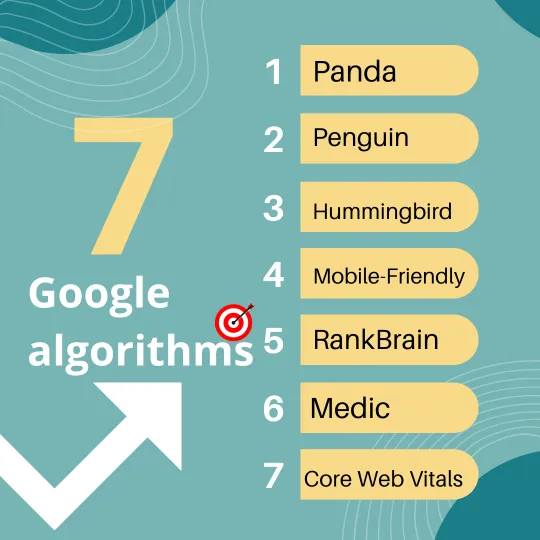The internet is a vast ocean of information, and navigating it effectively requires a powerful search engine. Google, the undisputed leader in web search, utilises a complex system of algorithms to sift through billions of web pages and deliver the most relevant results for your queries. But what exactly are these algorithms, and how do they work?
The Google Algorithms Orchestra: Ranking the Web
Imagine a massive orchestra, where each instrument represents a ranking factor. The conductor, the algorithm, wields the baton, determining how each factor plays its part in the final symphony – the search results page. Some factors might be like booming drums, signifying the importance of website content, while others could be like delicate flutes, representing factors like mobile-friendliness. The conductor constantly adjusts the volume and tempo of each instrument based on the specific query and Google’s ever-evolving understanding of user intent.
Here's a simplified breakdown of the core principles behind Google algorithm:
Crawling and Indexing: Google employs software called “web crawlers” that tirelessly scour the internet, discovering and indexing new web pages.
Ranking: Once a page is indexed, the algorithm analyses it based on various factors to determine its relevance and authority for a specific search query.
Retrieval: When you enter a search query, the algorithm utilizes the ranking data to retrieve the most relevant web pages from its vast index.
Evolving with the Web: 8 Major Google Algorithm Updates
Google’s algorithms are constantly under development, undergoing thousands of tweaks annually. However, some updates stand out as pivotal moments in Google’s quest to deliver the best possible search experience.

Here's a glimpse into eight major Google algorithm updates that have shaped the search landscape:
Panda (February 24, 2011)
Focused on rewarding high-quality content and penalising low-quality content farms churning out thin or plagiarised content. Panda aimed to elevate user experience by prioritising websites with valuable and informative content.
Penguin (April 24, 2012)
Targeted websites with manipulative link-building practices like keyword stuffing in anchor text and irrelevant backlinks. Penguin encouraged websites to build organic, high-quality links to improve their ranking.
Hummingbird (August 22, 2013)
This major update went beyond keyword matching to understand the searcher’s intent behind the query. Hummingbird aimed to deliver results that truly addressed the user’s need, even if the exact keywords weren’t used.
Mobile-Friendly Update (April 21, 2015)
As mobile browsing surged, Google prioritised mobile-friendly websites in search results. This update pushed webmasters to ensure their websites offered a seamless experience on smartphones and tablets.
RankBrain (October 26, 2015)
Introduced machine learning to the ranking process. RankBrain analyses various user signals and search behaviour to refine results in real-time, constantly learning and adapting to user needs.
Medic Update (May 4, 2018)
Focused on websites in Your Money or Your Life (YMYL) niches like health, finance, and legal matters. Medic prioritised websites demonstrating Expertise, Authoritativeness, and Trustworthiness (E-A-T) in such critical areas.
BERT (October 25, 2018)
This update further bolstered Google’s understanding of natural language. BERT, a pre-trained neural network, analyses the context of a search query, considering the relationships between words to deliver even more relevant results.
Core Web Vitals (May 2020 – Ongoing)
This update emphasises website user experience by prioritising factors like page loading speed, mobile-friendliness, and interactivity. Core Web Vitals encourage webmasters to create fast-loading, user-friendly websites that offer a smooth browsing experience.
The Takeaway: Staying Ahead of the Curve
Understanding Google’s algorithms is an ongoing pursuit. The eight updates mentioned above highlight Google’s dedication to user experience and its efforts to reward websites that prioritise quality content, user-friendliness, and trustworthiness.
So, how can you stay ahead of the curve? Here are some tips:
Focus on high-quality, informative content: Create content that is valuable, engaging, and addresses the needs of your target audience. You can contact us for content marketing. We will provide best content as per your need which will be helpful to rank your website.
Prioritise mobile-friendliness: Ensure your website offers a seamless experience across all devices.
Build organic backlinks: Earning natural links from reputable websites is crucial for building online authority.
Optimize for user experience: Focus on website speed, mobile-friendliness, and intuitive navigation.